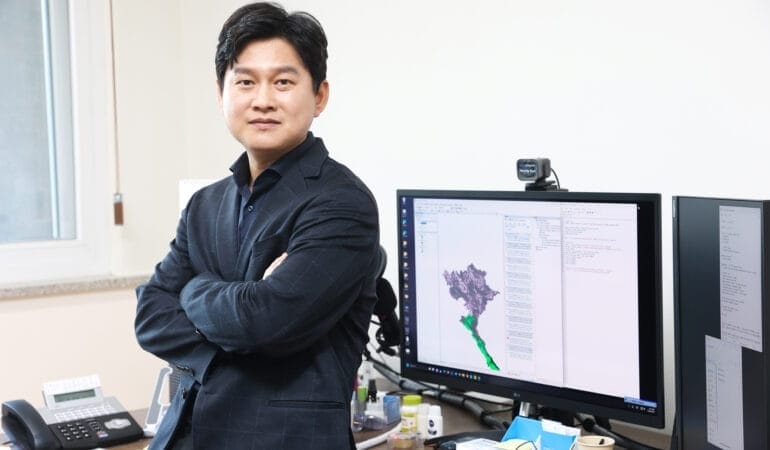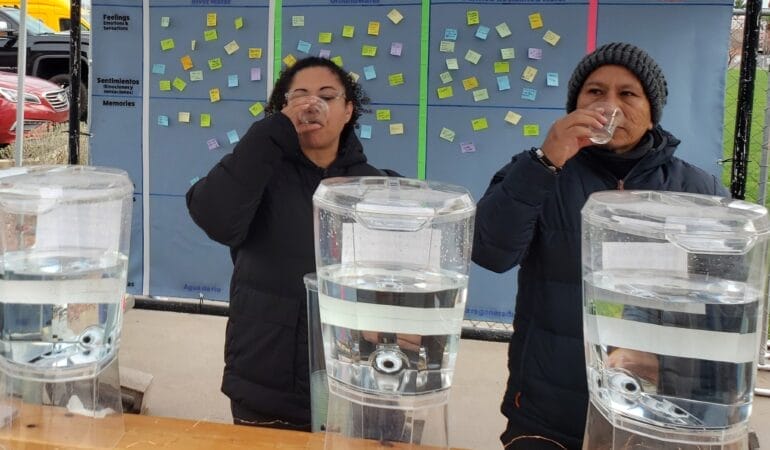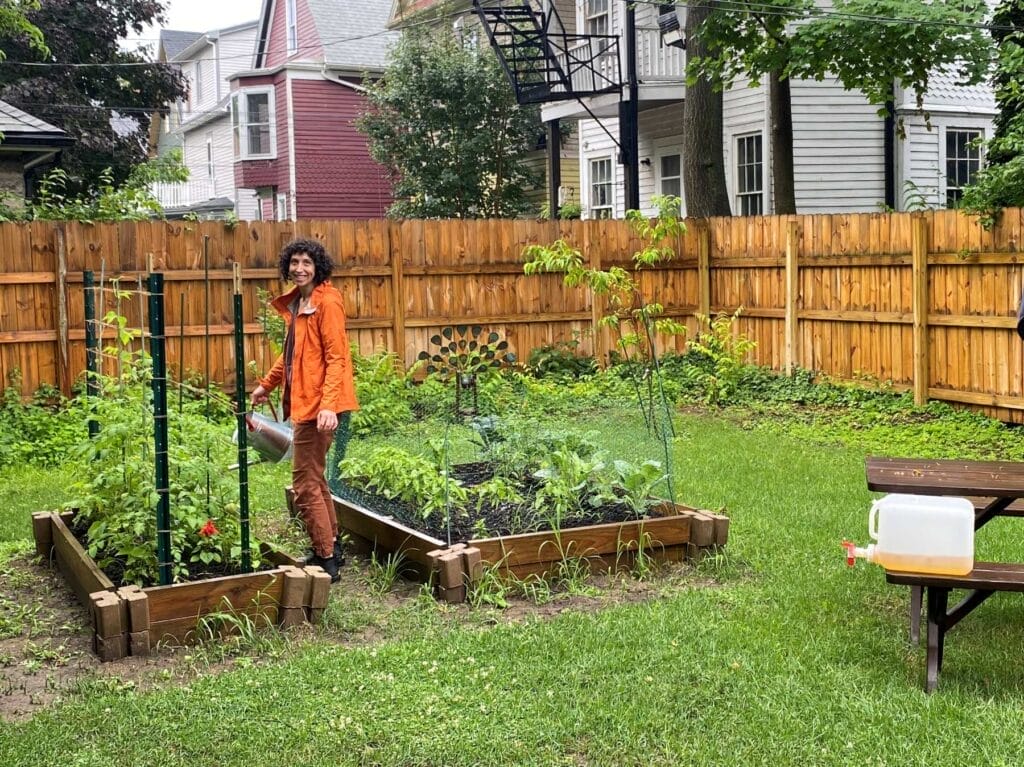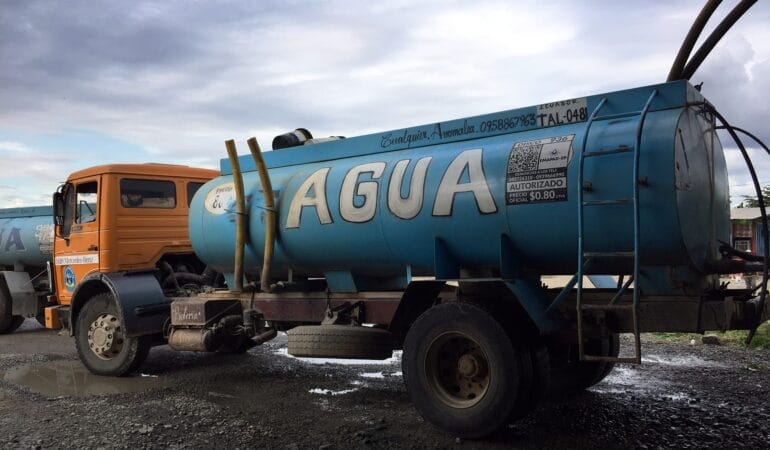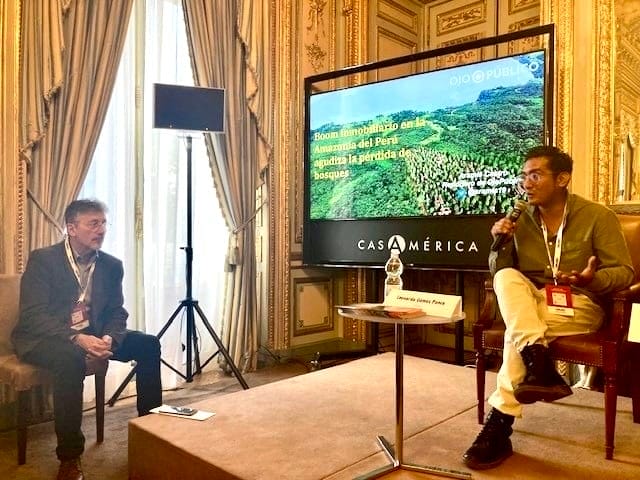The Lincoln Institute provides a variety of early- and mid-career fellowship opportunities for researchers. In this series, we follow up with our fellows to learn more about their work.
With a background in landscape architecture, Seung Kyum Kim has always been interested in the interplay between green space and the urban form.
After beginning his career at Design Workshop in Phoenix and Salt Lake City in the late 2000s, Kim relocated to South Korea in 2009 to take a role with the Ministry of Land, Infrastructure, and Transport, working on flood mitigation, drought, and stormwater management. There, he got interested in “how to minimize risk from flooding, natural disasters, and climate change,” he says, which led him to pursue a master’s and a PhD from the Harvard Graduate School of Design.
While at Harvard GSD, Kim joined a trip to several cities in China with Professor Richard Peiser and discovered he had an interest in housing and land policy as well. Since then, his research—which included work as an International Fellow through the Lincoln Institute of Land Policy’s China program in 2021—has spanned multiple disciplines, connecting urban planning, landscape architecture, housing and economics, environmental justice, and climate change.
In this interview, which has been edited for length and clarity, Kim reflects on some of the most successful climate-adaptive green spaces around the world, why cities with aging residents are less likely to invest in new green spaces, and how park usage differs in the United States and South Korea.
JON GOREY: What is the main focus of your research?
SEUNG KYUM KIM: I’m currently a professor at Korea Advanced Institute of Science and Technology [KAIST], which is very much focused on technology and science. The engineering school is very strong here, it’s like MIT in South Korea. My department is the Graduate School of Future Strategy, and I’m working on the economic side, urban planning and climate change, while some of the professors in our department are working on the engineering side.
I’m working on six research projects at the same time, so my field of research is kind of expanding, rather than going deep. I’m focusing on how climate policies like carbon taxes and the CBAM, or carbon border adjustment mechanism, influence the urban economy, particularly manufacturing competitiveness and urban inequality. I’m also exploring the long-term impact that these policies have on shrinking cities and urban revitalization.
One of my projects is on how blue-green infrastructure for climate change adaptation affects gentrification in urban areas in 32 countries on the African continent. And in one of my recent research papers, published in the journal Nature Climate Change, I was researching how an aging population impacts climate policy.
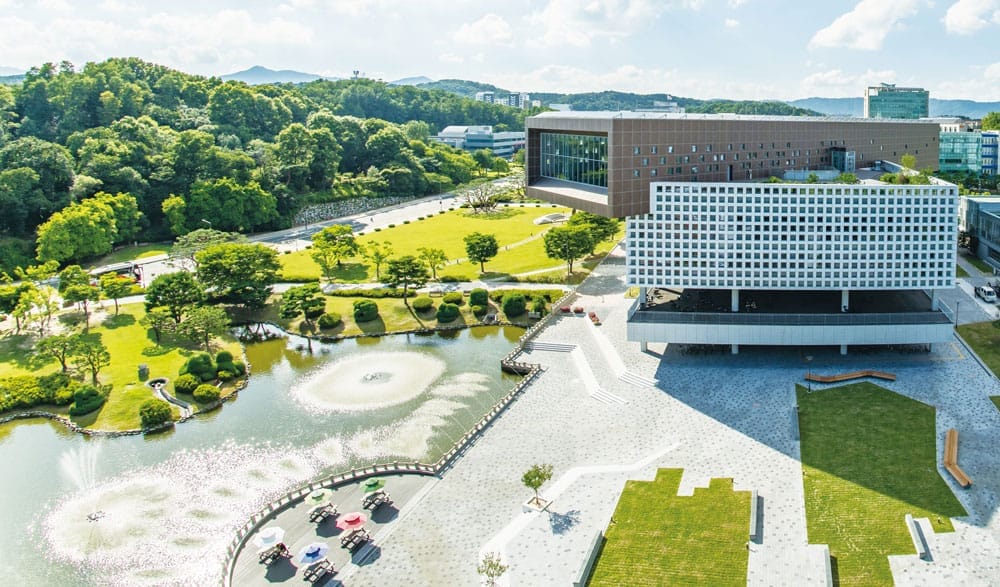
JG: What’s something that was surprising or unintuitive that you found in your research?
SK: I studied how the aging population impacts climate adaptation strategy in Southeast Asia. Using remote sensing and difference-in-differences approaches, I found that communities with a growing elderly population were seeing reduced green infrastructure and green spaces, making them more vulnerable to climate change. This was sort of surprising, and it underscored the importance of considering demographic change in climate policy planning.
As people get older in a community, the tax base decreases. So with a limited budget, the government’s priorities are different. As the people are getting older, the government mostly focuses on hospitals, the health budget is increased—but for environmental green space and parks, investments in those kinds of amenities, the budget is reduced.
JG: What do you wish more people knew about urban green spaces?
SK: I wish people understood that climate policy isn’t just an environmental concern. It is deeply connected to economic and social equality. Effective urban planning can simultaneously address environmental, economic, and social issues as well.
JG: You’ve studied green spaces all over the world. Are there any great projects that you think were particularly successful at combining green space and climate adaptation?
SK: There are a few inspiring examples of successful green space projects that also address climate change and provide cultural benefits. There’s the Cheonggyecheon Stream restoration in South Korea, this was 15 or 20 years ago. Originally it was a covered highway, and the Cheonggyecheon was restored into an urban stream and linear park in central Seoul. It significantly reduced urban heat island effects, improved air quality, boosted biodiversity, and provided the poor with an urban oasis in the densest area of the city.
One of the reasons they did not convert the covered highway into a stream and green space earlier was that land prices are very expensive in central Seoul, and because of traffic issues, transportation issues. So there were two phases. Before the Cheonggyecheon restoration project, they actually modified the transportation systems within Seoul. . . . The local government created a dedicated bus lane in the center of the road to solve the traffic conditions. After that, they did the stream restoration. So that kind of environmental project is not solely a green space project, it’s linked. That’s one of the reasons we need to see the broader perspective. We need to see the transportation and climate change and environmental benefits and the cultural benefits within urban issues.
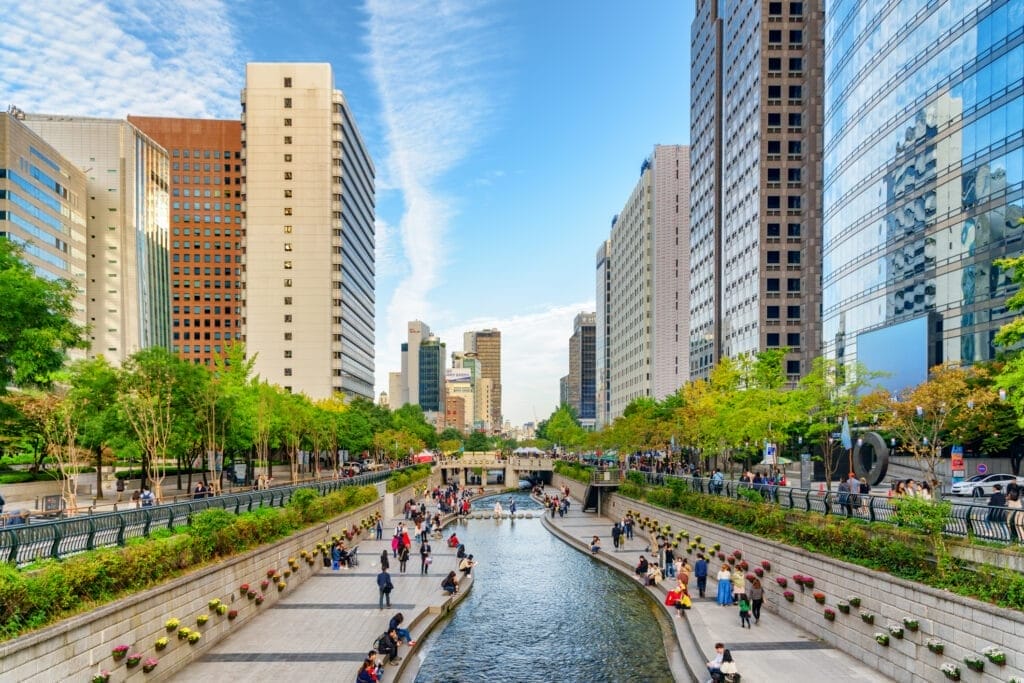
China also has the sponge city initiative in various cities, including Wuhan and Xinjiang. It aims to incorporate permeable surfaces, wetlands, green roofs, and rain gardens throughout the urban area. The [sponge city] project improves urban water management to reduce flooding and runoff and enhance the urban ecosystem, making the city more resilient to extreme weather events.
JG: Have you noticed any differences in the ways we use or don’t use urban green space in the United States compared to South Korea?
SK: In the United States, green space often means larger parks . . . nature reserves and recreational areas that are generously spread out, especially in suburban or less dense urban areas. Expansive parks like Central Park in New York or Golden Gate Park in San Francisco, they’re intended not only for recreation but also for preserving nature and wildlife within an urban context.
But in Korea, the green spaces are usually smaller—it’s a small country, so they’re more strategically placed within dense urban neighborhoods because of limited urban land availability. The parks tend to be compact and highly designed to maximize efficiency, often equipped with walking paths, exercise equipment, benches, and community gardens. Also, in Korea green space focuses heavily on accessibility, daily convenience, and the well-being of residents fitting seamlessly into the high-density urban environment. Another difference is cultural usage. Korean parks often serve as a community space for daily activities, like group exercise and community gatherings, whereas US parks might see more individual, family-based recreational uses, like picnics and sports and leisure activities.
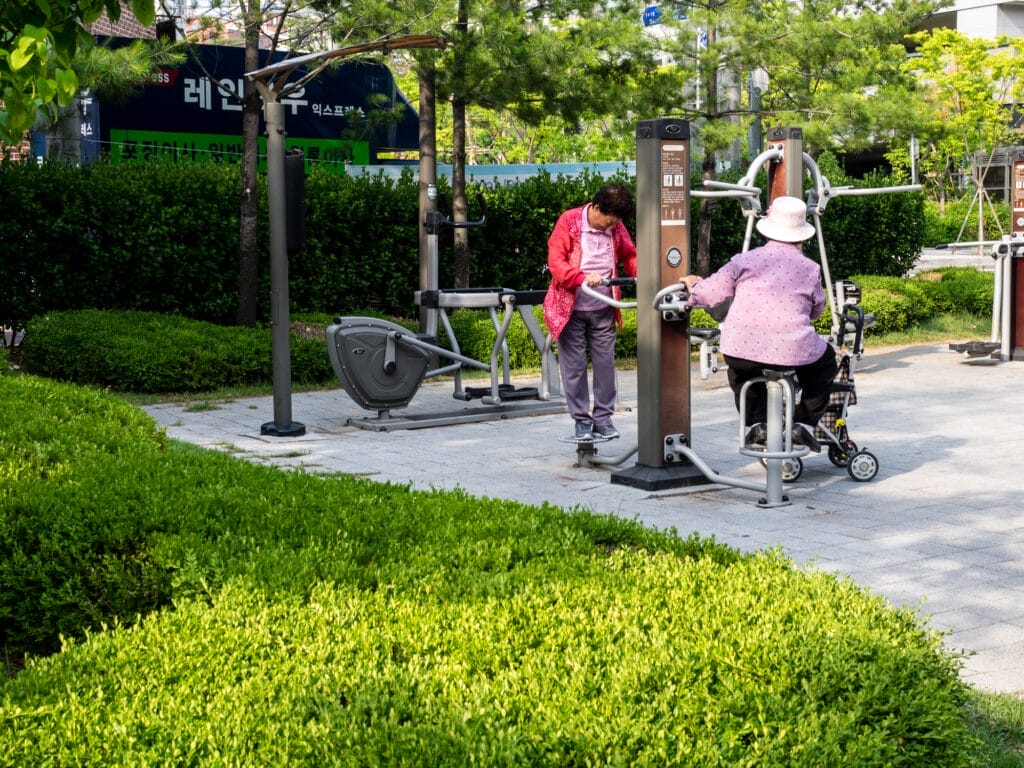
JG: What’s the best book you’ve read lately, or a favorite TV show you’ve been streaming?
SK: Recently I read Elizabeth Kolbert’s Under a White Sky, which vividly explores how environmental innovations can sometimes have unexpected consequences. Another book I read recently was Ian Goldin’s Rescue: From Global Crisis to a Better World. That was also fascinating, especially how it highlights the factors determining urban success or failure.
Jon Gorey is a staff writer at the Lincoln Institute of Land Policy.
Lead image: Former Lincoln Institute International Fellow Seung Kyum Kim. Credit: Courtesy photo.






